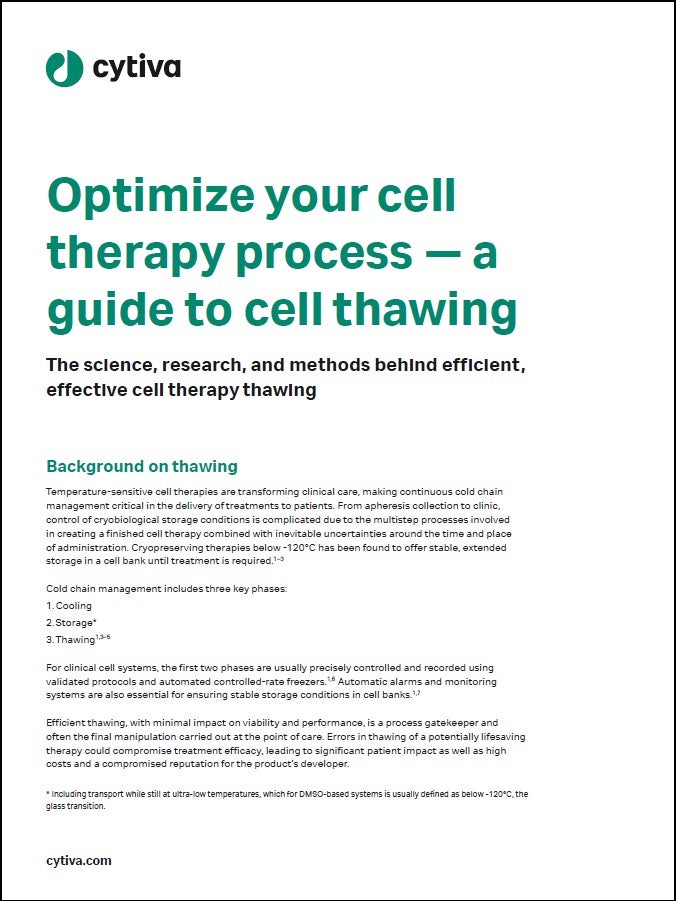

As cell and gene therapies continue to take the clinical trial space by storm, the drug development market is becoming more advanced by the day. Surprisingly, however, a lot of the quality control (QC) processing for these drugs is still done with pen and paper, even within the big pharma corporations.
Patients who need cell and gene therapies often have a greater disease burden and necessary procedures such as apheresis can take a toll. This, added to the quick turnaround time required for these therapies, means that every part of the development process must be as quick as possible. Therefore, there is a need for software solutions to assist with the QC process.
At the Veeva R&D Summit Europe, held on 4–5 June in Madrid, the software company announced its new Batch Release software, which will assist in speeding up this process.
Clinical Trials Arena sat down with Mike Edwards, director of batch release strategy at Veeva, to talk about the new software and how it will support the QC process.

This interview has been edited for length and clarity.
Abigail Beaney (AB): What is the biggest pain point within the manufacturing and QC process for cell and gene therapies?
Mike Edwards (ME): With gene editing, the most important thing is the speed. What data can we get from the patient that is going to involve the manufacturing process? The main pain point here is how to get that data to the right person as quickly as possible, which requires the business system to be digitised. Therefore, we have to ensure the right people can access what they need immediately. The biggest issue in shortening that time to get back to the patient is the QC testing and that is often related to legacy paper-led systems.
AB: Could you talk about Batch Release and how this technology will be utilised in clinical trials?
ME: When we look at the drug life cycle, starting with R&D and clinical trials, there is a smaller-scale manufacturing process that is increasingly becoming more personalised. Often most of the manufacturing gets tossed out because it is not needed; either a patient situation has changed or the medication has changed.
The problem with tightening up that process is that you may understand the demands, variables, and what is going on with production and commercial manufacturing, but you don’t necessarily know this with clinical trials. The issue of waste is increasing for many different suppliers. A lot of that problem comes down to the amount of paper systems – whether that be printed paper, word documents or files that are put into a SharePoint site that the customer needs to absorb and then bring into their process. You have this very poor system where developers who should be looking at QC data are instead bookkeeping. Even the largest mature organisations are still struggling with this process.
AB: How does a current batch process look and how does this software differentiate from that to save time?
ME: Let’s take the example of building a drug. It should have certain levels of ingredients, purity, temperature control, and more. That is where this software comes in; with it, we can test and verify in real time that the process has been completed and verified.
The other aspects it can track are if something may have gone wrong with QC, the required level of testing, if there was a deviation from the quality management system and if the proper process was followed, among other things.
Sometimes, old batches of product will run into new batches. This can make it more complicated and is where QC can be the biggest challenge. This is where paper systems that are commonly used as references must be checked between batches. This is not something unique to small companies, with mature companies reporting similar workflow. Veeva is not intending to change the fundamental process, but we recognise it is very inefficient. What we want to do is add more visibility and speed to this area.
AB: How much can this software in QC services speed up cell and gene therapy access and what role will automation play in that process?
ME: One of the first things we are going to do is benchmark the current processes of our clients and determine how to speed that up. I will ask customers how quickly does that process take right now? I have had major pharmaceutical companies say that they are not 100% aware of how many batches go out the door on a year-by-year basis, because of the difficulty in having real-time data available. One of the first waves of value that Batch Release is going to provide is digitising a lot of work, and then just seeing how the process works currently. Then the second part is looking at an optimal way to improve current paperwork. In gene editing, there are going to be things that we could change that would save time, but we are going to get a lot better than that as we get more data.
Editorial content is independently produced and follows the highest standards of journalistic integrity. Topic sponsors are not involved in the creation of editorial content.




